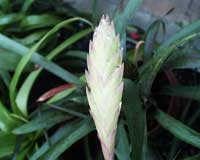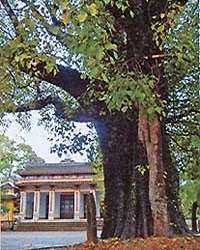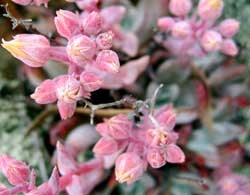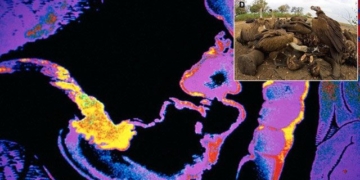This “super plant” is highly regarded by experts for its significant economic value to humanity.
A Metal-Heavy Plant
According to Kompas, in 2004, Aiyen Tjoa—a geological biologist and lecturer at Tadulako University—accidentally visited a small town in Sorowako located in the heart of Sulawesi Island, Indonesia. This town is one of the largest nickel mining areas in the world, with a local mining company contributing 5% of the global nickel supply.
Sorowako is also known for its unique vegetation, home to many endemic species not found elsewhere. However, upon Tjoa’s arrival, he found that much of it had been cleared, leaving behind barren and dusty land.
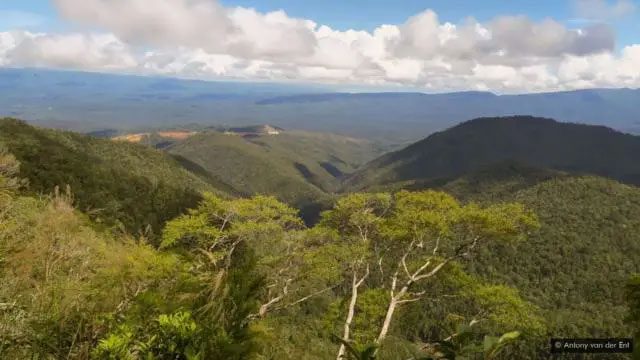
On Sulawesi Island, Indonesia, a group of researchers discovered two plant species commonly found in nickel mines. (Photo: Global Plants)
During his search, Tjoa stumbled upon two types of plants that consistently appeared above the nickel mining sites in this town: Sarcotheca celebica and Knema matanensis.
According to Tjoa, these plants can be termed as “super plants” because they not only thrive in nickel-rich environments but also possess the ability to absorb significant amounts of this metal. In reality, most plant species can only uptake a small quantity of heavy metals to activate certain enzymes necessary for their flowering process. However, excessive nickel can lead to toxicity and death for the plant. Therefore, species capable of storing large amounts of nickel are quite rare.
Saraca celebica is a species from the Fabaceae family, found exclusively in Indonesia. It typically grows near streams and low-lying areas. According to the World Red List, Saraca celebica was listed as endangered in 1998, and its mature population has significantly declined due to severe deforestation by locals.
Knema matanensis is a species belonging to the Myristicaceae family. This plant is also classified as vulnerable (D2) in the World Red List since 1998, and its habitat is currently diminishing in both area and quality due to human activities.
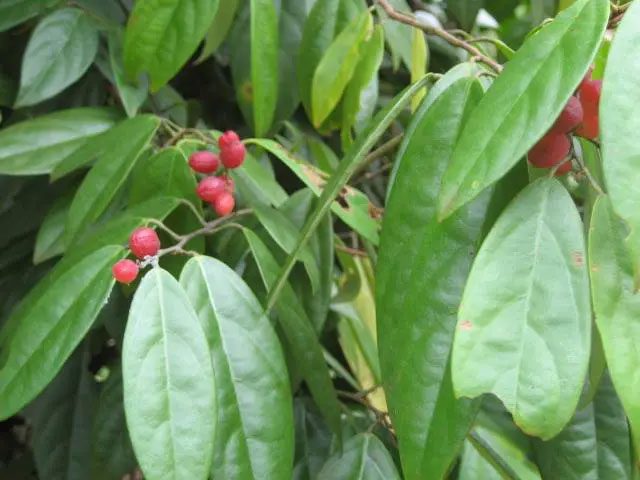
One of the two plant species capable of absorbing large amounts of nickel, found only in Indonesia. (Photo: Global Plants).
Biologists have analyzed and found that these two species primarily store nickel in their shoots, leaves, roots, and sap. A distinguishing feature is that the sap of these plants has a banana-green or blue hue due to the presence of nickel.
Completing this research took Tjoa four years as he scoured the entire town. After identifying these two species, he collected samples for laboratory analysis, drying them and examining them using X-ray techniques. Both Sarcotheca celebica and Knema matanensis can store between 1,000 to 5,000 micrograms of nickel per gram of dry leaves.
However, globally, around 450 plant species are known to grow in nickel-rich areas. For instance, Alyssum murale, an indigenous species from Italy, can store up to 30,000 micrograms of nickel per gram of dry leaves. Another species, Phyllantus balgoyii, found in Malaysia, also contains a similar amount of nickel in its sap. In contrast, compared to other nickel-accumulating plants worldwide, the two species discovered by Tjoa have relatively lower storage capacities.
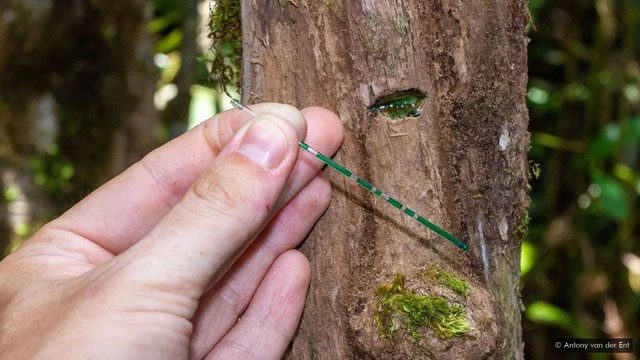
The distinguishing feature of plants with high nickel content is that their sap has a banana-green or blue color. (Photo: BBC).
This threshold may be high compared to other metal-accumulating plant species, but Tjoa’s team is searching for plants capable of storing at least 10,000 micrograms of nickel per gram of dry leaves. The reason is they aim to turn these plants into a new source of nickel.
This method of extracting the metal without destroying ecosystems is called “phytomining.” Specifically, in super nickel-accumulating plants, when they are burned to ash, the contained metals become magnetic. This is partly because nickel absorption in hyperaccumulator plants occurs simultaneously with the uptake of iron, a metal with high magnetic properties.
According to the research team’s calculations, if they find plant species that can store up to 30,000 micrograms of nickel in 1 gram of dry leaves, they could produce 120 kg of nickel per hectare annually. At current market prices, this could yield about $1,754 per hectare.
The nickel extraction process from the plants requires trimming and burning the shoots, as this is where the highest concentrations of the metal are found. While this process releases CO2 emissions when burned, the experts indicated that replanting these super nickel-accumulating species would help balance out the CO2 produced.

Scientists will utilize the method of burning nickel-rich plants to harvest this metal. (Photo: Investing)
Additionally, Tjoa shared with the BBC that these plant species would help rehabilitate the soil in nickel mining areas. Mining for nickel requires crushing the rock, which releases radioactive elements, cement dust, and metal dust. Moreover, these mines discharge a lot of hazardous liquid waste known as tailings. If not properly managed, waste containing arsenic and mercury can leak into the environment. Furthermore, this method also produces significant CO2 emissions.
In contrast, the phytomining method provides many additional benefits. The super nickel-accumulating plants not only enhance soil quality but also supply essential nutrients to other common plant species. This creates economic benefits for mining companies due to the residual nickel found in the plants. These companies can utilize phytomining as a complementary method.
Why is Nickel Compared to “White Gold”?
Nickel is a naturally occurring metal element with a silvery-white, shiny appearance. It is the fifth most abundant element on Earth, found extensively in the crust and core of the planet. Nickel, along with iron, is also a common element in meteorites, and trace amounts can even be found in plants, animals, and seawater.
According to the Royal Society of Chemistry (RSC), nickel was discovered in 1751 by Swedish mineralogist and chemist Axel Fredrik Cronstedt.
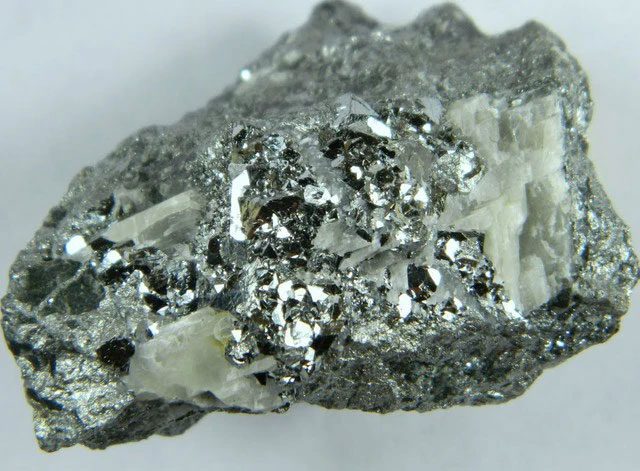
Nickel is a naturally occurring metal element with a silvery-white, shiny appearance. (Photo: Investing)
In the context of industrialization and modernization, especially within the current global supply chain, nickel is among the most sought-after resources worldwide, particularly as it is widely used in future technology such as electric vehicle (EV) batteries.
Experts forecast that in the near future, as the demand for nickel in battery production increases and the scale of battery manufacturing expands, the global demand for nickel will rise significantly. This means that the world may face a nickel shortage if the global supply chain is affected or disrupted by geopolitical fluctuations or conflicts.
Currently, demand for nickel is very high in China, which experts believe will impact the growth of nickel consumption in the near term.
At the same time, China accounts for over half of the world’s nickel consumption and is expected to continue rising due to increasing stainless steel production and battery manufacturing driven by the growing trend of electric vehicles.

Nickel is currently a metal causing a “global thirst.” (Photo: BBC).
Meanwhile, the world’s largest nickel-producing countries are beginning to reconsider how to preserve this essential metal for themselves. Consequently, this metal is creating a “thirst” globally, often referred to as a form of “white gold.”
According to Central Economic News, nickel is fairly well distributed globally, with estimated resources of around 300 million tons.
Nickel reserves are estimated to be 94 million tons, primarily located in Indonesia (22.4%), Australia (21.3%), Brazil (17%), Russia (7.3%), Cuba (5.9%), and the Philippines (5.1%).
Notably, Sulawesi Island and some nearby islands in Indonesia contain the world’s largest ultra-mineralized geological layer, covering 23,400 hectares, which could contain high levels of nickel. Aside from having substantial nickel content, the soil from this geological foundation also exhibits high plant endemism. Therefore, these areas are ideal for the growth of super nickel-accumulating plants and the implementation of phytomining methods.








































